
For the Ganji Annam
| Salt | To taste |
|---|---|
| Yoghurt (whisked) | 1 cup |
| Green chillies (slit in half) | 12 (adjust according to heat tolerance) |
| Medium onions (cut in half) | 4 |
| Carom seeds | 1 teaspoon |
| Water | 8 cups |
| Foxtail millet | 1 cup |
For the Fish Pickle
| Salt | To taste |
|---|---|
| Green chillies (finely chopped) | 4 |
| Ginger (finely chopped) | 1 tablespoon |
| Garlic (finely chopped) | 2 tablespoons |
| Coconut oil | ¾ cup |
| Curry leaves | 2 sprigs |
| White vinegar | ½ cup |
| Fenugreek seeds | ⅛ teaspoon |
| Cinnamon stick | 1 ¼ inch |
| Cloves | 7 |
| Whole peppercorns | 1 teaspoon |
| Cumin seeds | 1 teaspoon |
| Whole red chillies (Kashmiri or Byadagi) | 8 |
| Whole red chillies (of a spicy variety) | 12 |
| Red chilli powder | ½ teaspoon |
| Turmeric | 1 ½ teaspoon |
| Tilapia (or any firm fish) | 400 grams |
What You Will Need
A mixie, one pan, a pressure cooker or deep bottomed pot, a large sieve, an earthen or glass bowl, a sanitised pickle jar, a spatula, and a spoon.
Instructions
For the Ganji Annam
Soak the foxtail millet in water for an hour before beginning to cook.
Remove the excess water from the soaked millet, and add it to the pressure cooker along with four cups of water and salt to taste.
Turn on the stove and place the pressure cooker on the burner on a low to medium flame. Let the millet cook until the cooker releases four to five whistles.
Turn off the burner and let the cooker sit until most of the steam settles, then open it.
Pour the remaining four cups of water into the cooker, turn the burner on again, and let the porridge boil for ten minutes.
Strain the liquid into a bowl. Set aside, and let the liquid and the cooked foxtail millet cool to room temperature.
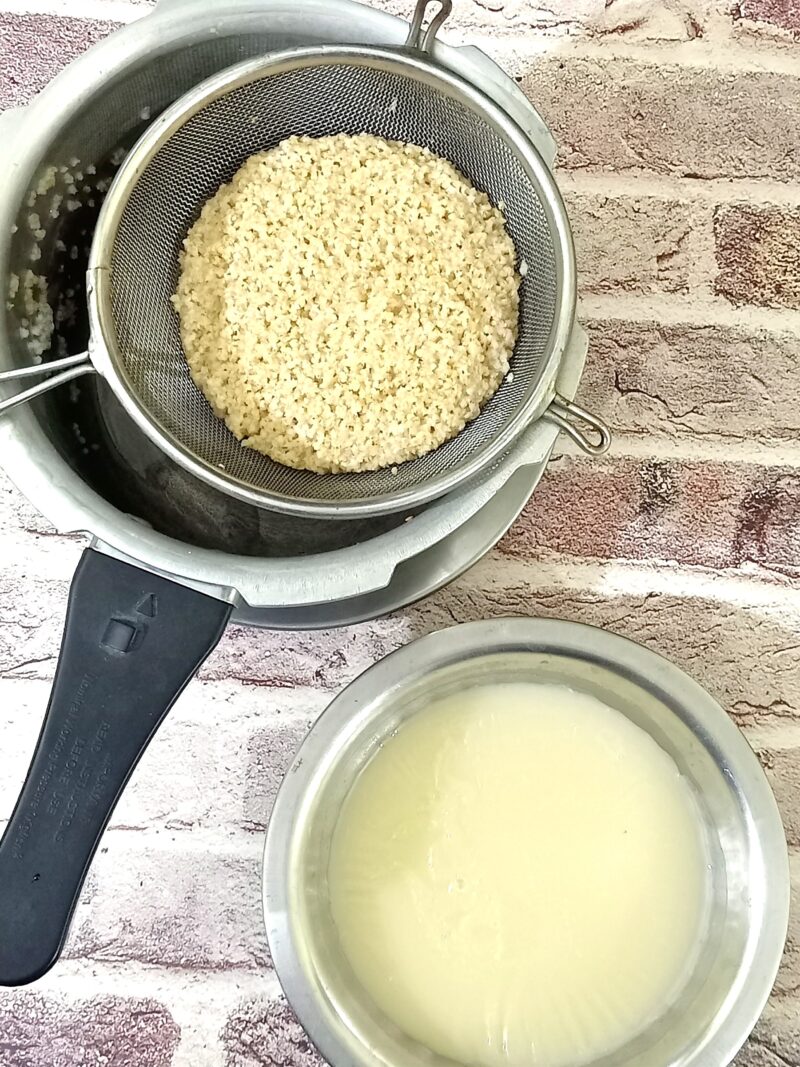
Transfer the cooked millet to an earthen or glass vessel.
Hand crush the carom seeds until fragrant and add them to the millet.
Stir the yoghurt into the millet cooking liquid, then add this to the cooked millet.
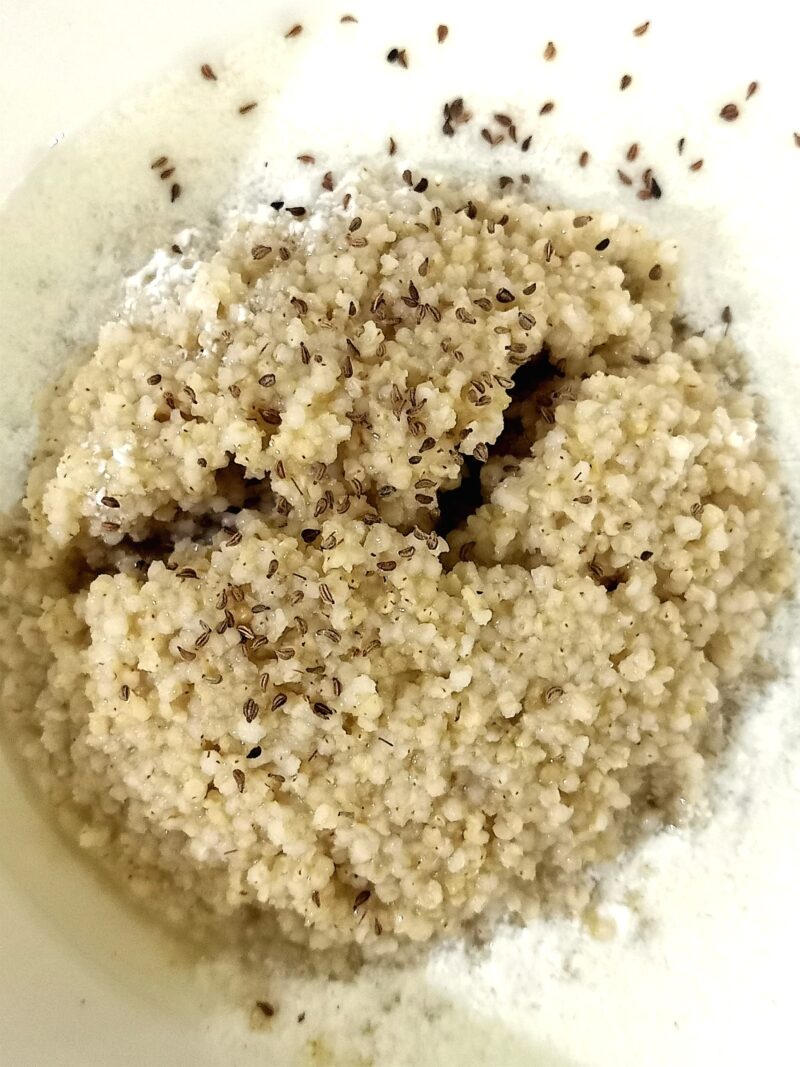
Add the onions and green chillies to this mixture and cover. Set aside to ferment overnight.
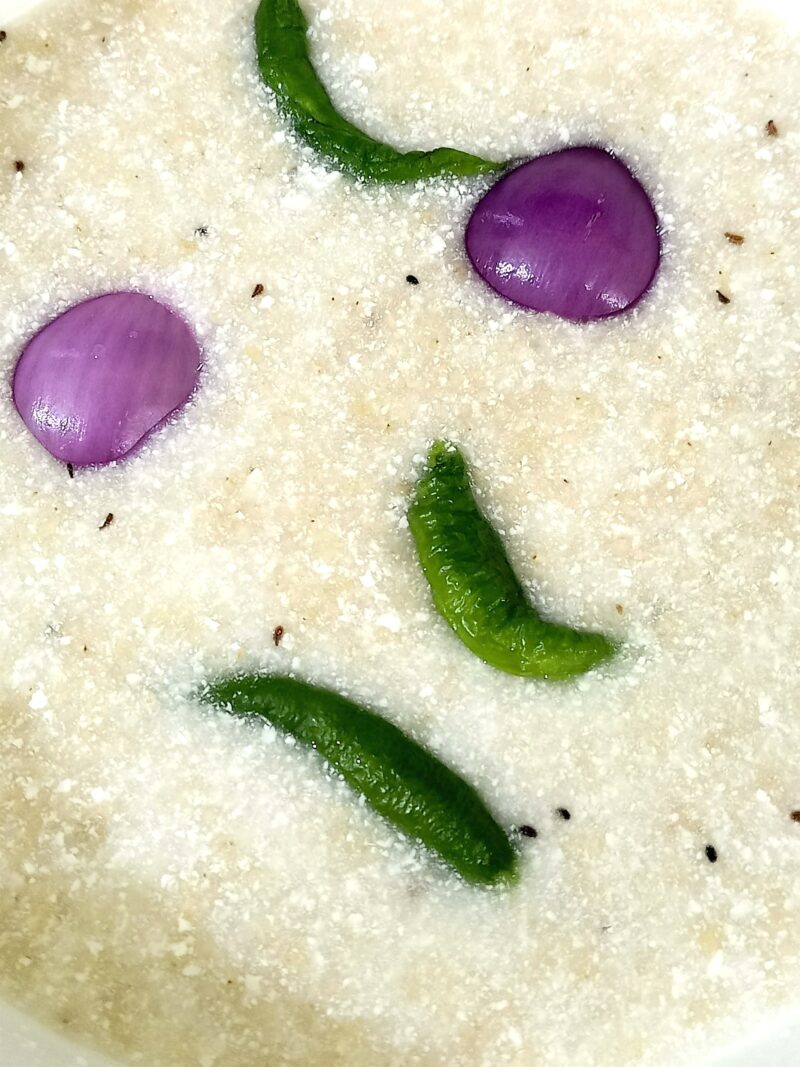
The Ganji Annam will be ready to eat the morning after.

For the Fish Pickle:
Wash the cubed, boneless fish filets and marinate with salt, half a teaspoon of turmeric, and a quarter teaspoon of red chilli powder. Set aside for at least an hour.
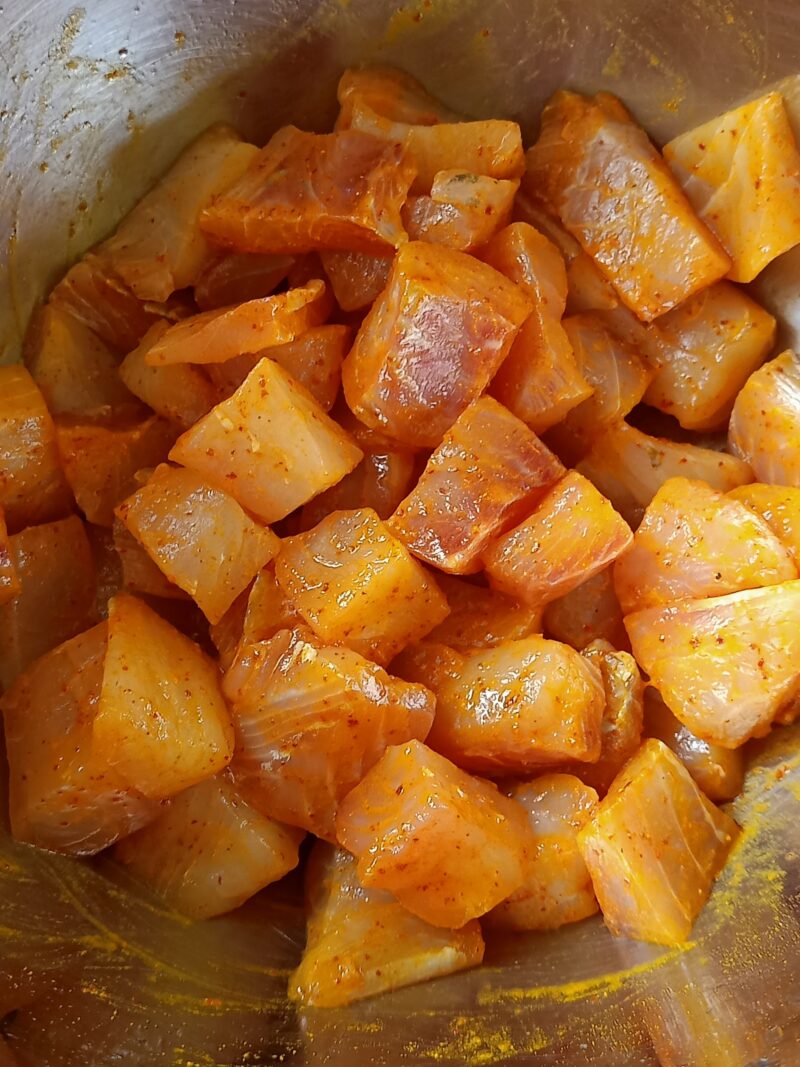
Make a paste of all the whole spices, vinegar, and half a teaspoon of salt.
Turn on the stove. Pour three tablespoons of coconut oil into a pan and set it on the stovetop on a medium to high flame. Fry the fish, cooking the pieces on all sides till they turn a brownish colour. Since the fish is going into a pickle, it needs to be fried until no moisture is retained. This enhances the shelf life of the pickle. Keep aside in a clean, dry bowl.

Pour the remaining coconut oil in the pan. After the oil is heated through, add in the minced ginger, garlic, green chillies, and the curry leaves, and fry well for three to four minutes on a low to medium heat.
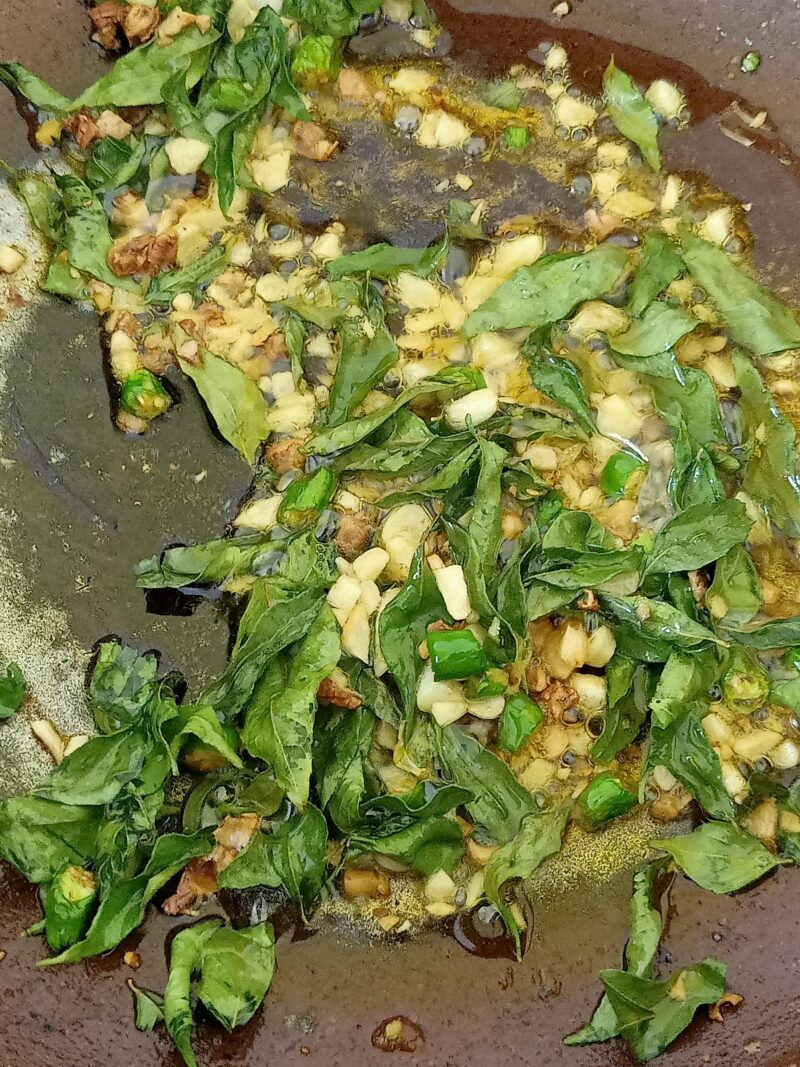
Add the spice paste to the pan now, along with the remaining turmeric powder and red chilli powder. Cook the mixture on low heat till the spice paste is cooked well, and oil starts to separate from the mixture.
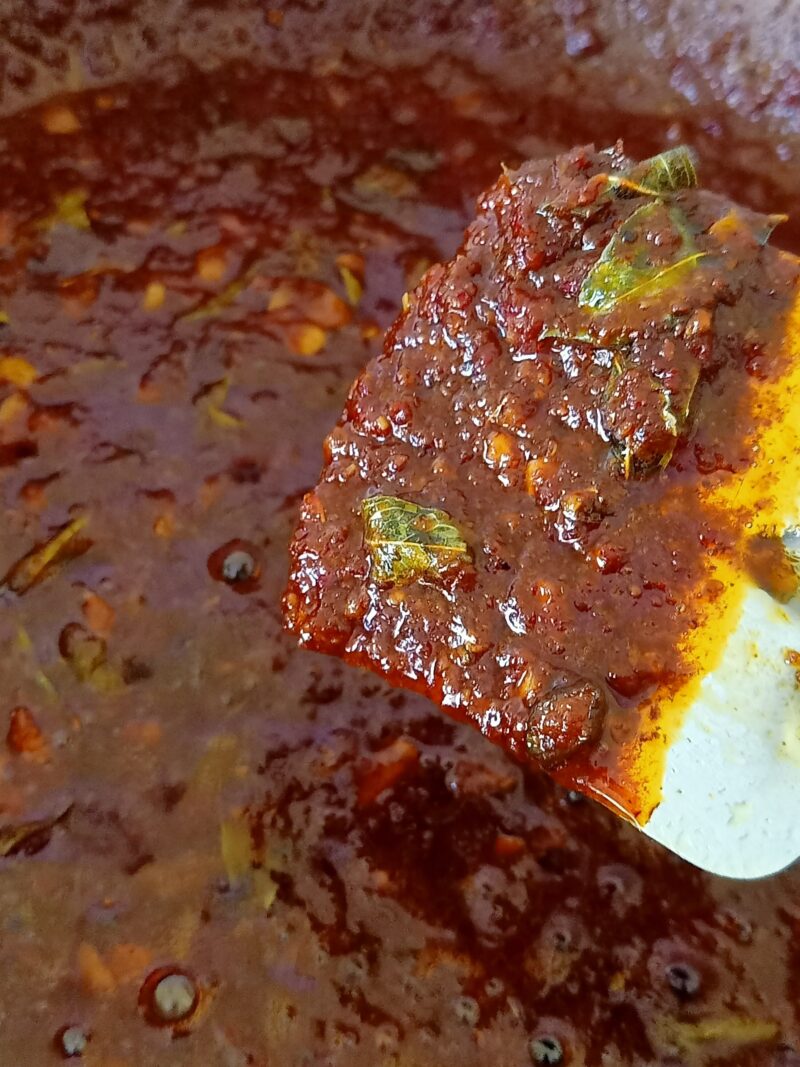
Add the fried fish to the pan at this stage, adjust for salt, and cook on a low flame for another five to six minutes.
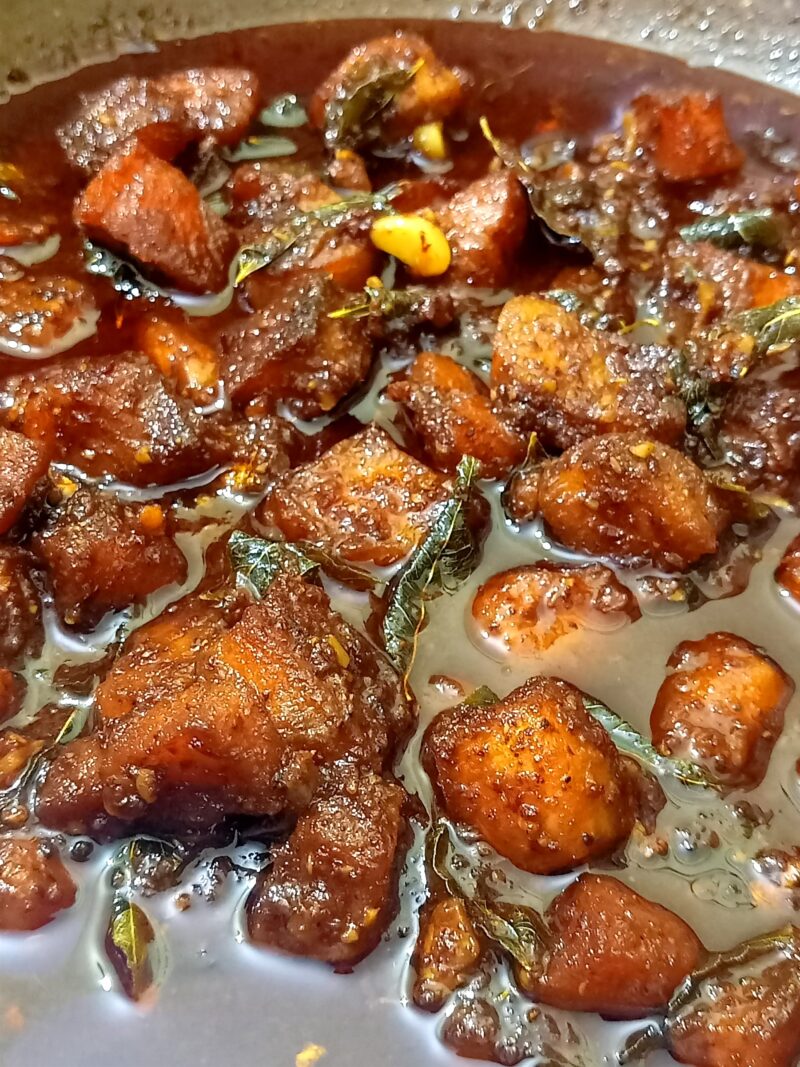
Turn off the flame and cool the pickle down to room temperature.
Once cool, transfer the pickle to a clean, air-tight pickle jar.
Keep the jar at room temperature for 24 hours before consuming the pickle. After a day, store it in the refrigerator, and use a clean, dry spoon to remove it from the jar.
Serve the foxtail millet Ganji Annam with a side of fish pickle.
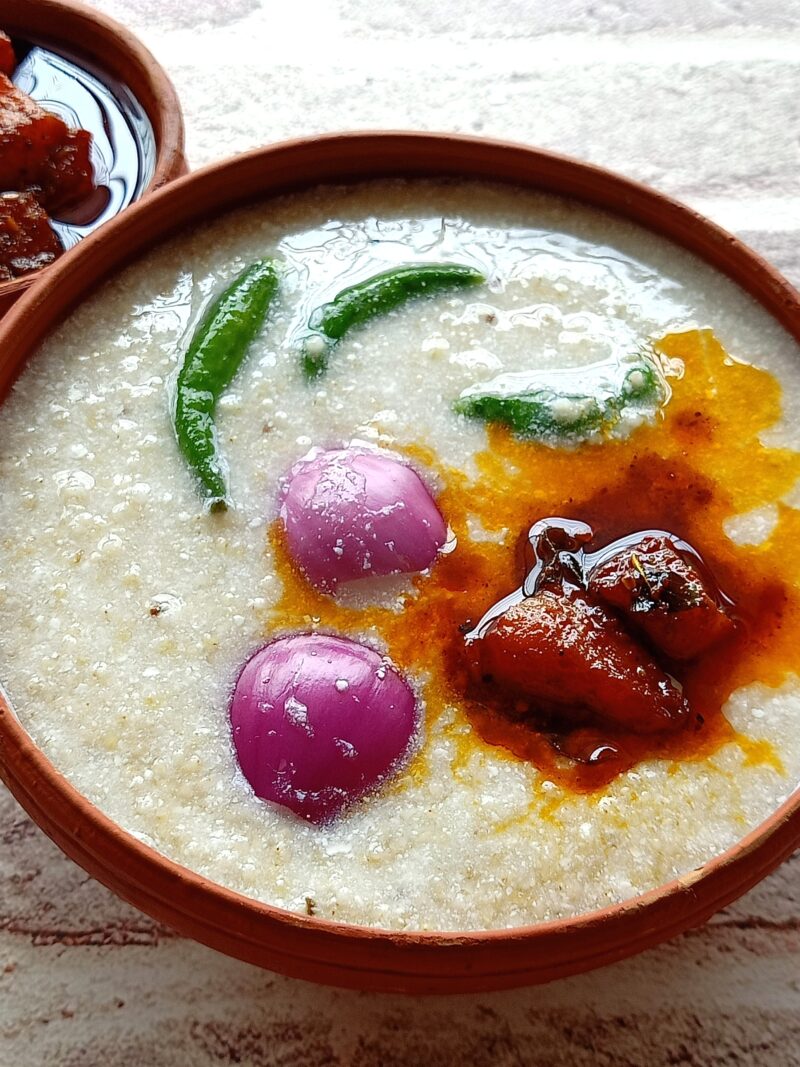
Tips
Cook and store the fish pickle in clean, dry vessels and jars. Even the spatula used to stir it should be dry.
Set the Ganji Annam in a clean, earthen or glass bowl for the fermentation process. Steel or aluminium vessels should be avoided.
Variations
This millet Ganji Annam can be eaten with any pickle or papadums of your choice.
Sayani Sengupta is the lab lead for the MRP cooking lab, and a home chef based out of Kolkata. Sayani runs her own food brand, Gooseberri, for which she often writes recipes. Her recipes have also featured in Bengali magazines, such as Sananda, as well as other publications like Times of India, Telegraph, and Indulge Express.
You must be logged in to rate this recipe.

Sign in with email
